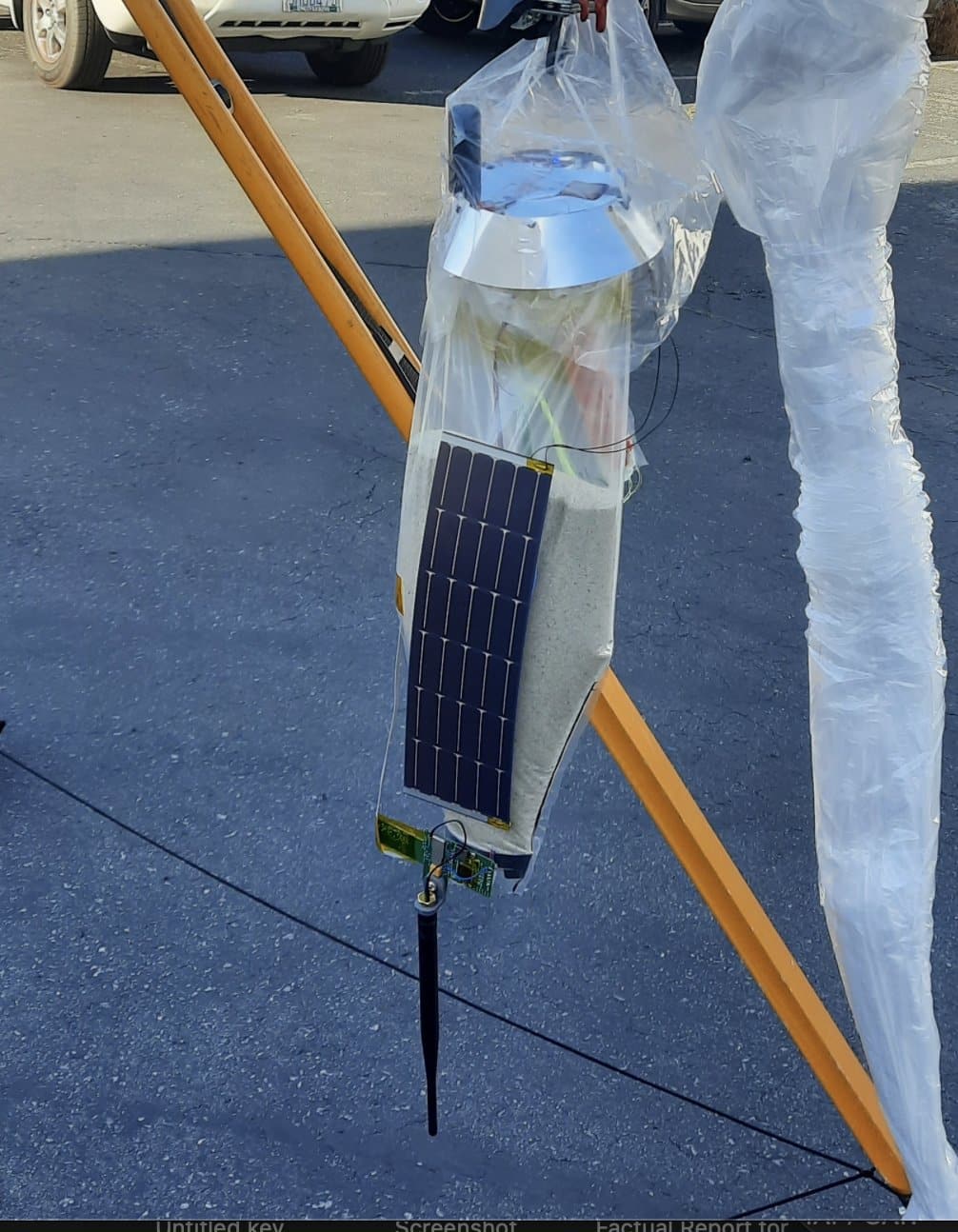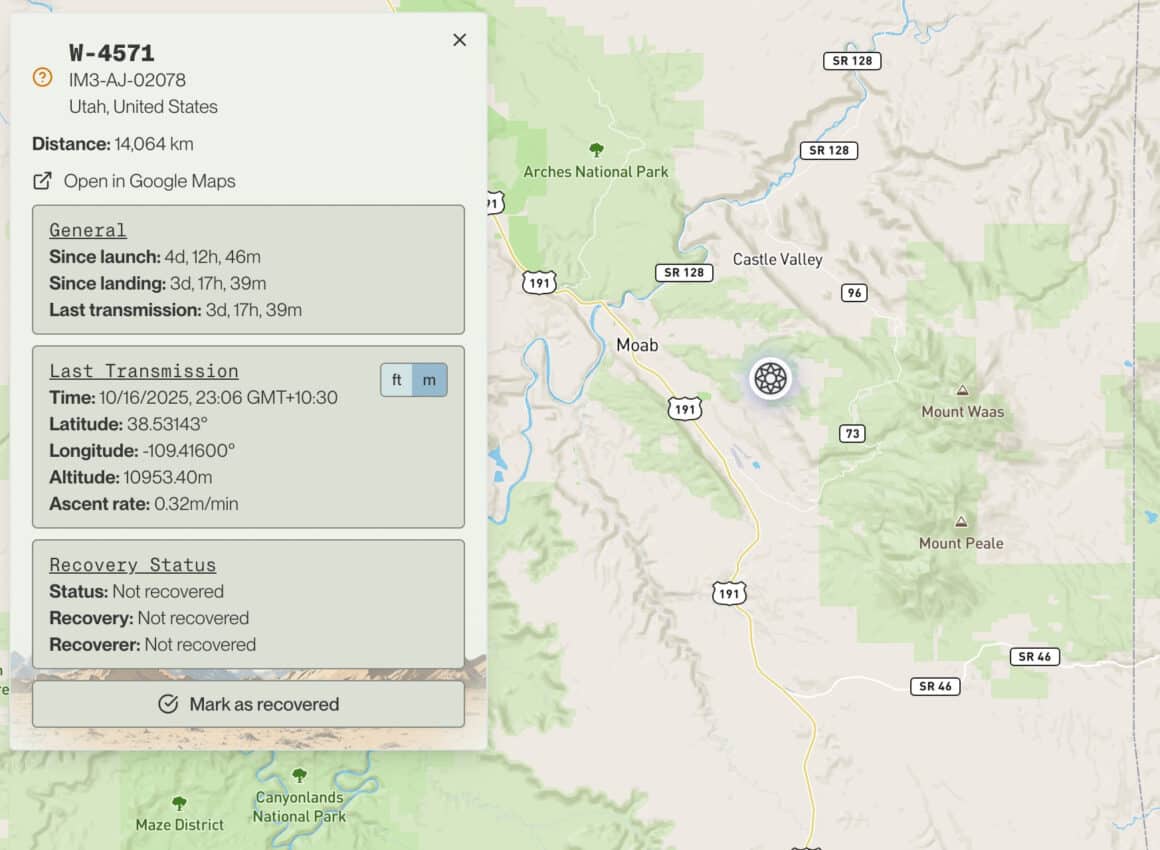The mystery of what struck United Flight 1093 over Utah last week may be one step closer to being solved.
The incident occurred on Thursday, 16 October, when a United Airlines Boeing 737 MAX 8, operating from Denver International Airport (DEN) to Los Angeles International Airport (LAX), was cruising at 36,000 feet over southern Utah. Roughly 37 minutes into the flight, something slammed into the aircraft’s right windshield, shattering the outer pane and injuring the captain. Despite the impact, the aircraft remained pressurized.
The crew immediately descended to 26,000 feet and diverted to Salt Lake City International Airport (SLC), where the aircraft landed safely approximately 50 minutes after impact.
The National Transportation Safety Board (NTSB) is leading the investigation, and the damaged windshield has been sent to its laboratory for analysis.
From Space Junk to Spy Balloons and Aliens. Now, a Possible Answer.
Since news of the United Flight 1093 incident was made public, speculation has run rampant across the internet, with theories ranging from micrometeorites and SpaceX satellites to Chinese spy balloons — and yes, even aliens.
But late Monday evening, a possible explanation surfaced on social media.
John Dean, cofounder and CEO of WindBorne Systems, a Palo Alto, Calif.–based aerospace company that designs and operates long-duration weather balloons, announced on X that one of his company’s balloons may have been involved in the collision.
“I think this was a WindBorne balloon,” Dean wrote. “We learned about UA1093 and the potential that it was related to one of our balloons at 11pm PT on Sunday and immediately looked into it. At 6am PT, we sent our preliminary investigation to both NTSB and FAA, and are working with both of them to investigate further.”
WindBorne’s Preliminary Findings

Dean confirmed that WindBorne operates “a constellation of long-duration lightweight weather balloons to improve weather forecasts, with much of our data going to both US and international governments.”
He emphasized that the company complies with FAA Part 101 regulations and international standards. “We file NOTAMs, follow all specifications required by FAA 14 CFR Part 101, and share all live balloon positions with the FAA via API and our website,” he said.
The company’s current operational balloon design is “about 2x lighter” than earlier versions, weighing roughly 2.4 pounds (1 kilogram) at launch and getting lighter during flight.
According to Dean, the system “is designed to not pose a risk to human life in the worst-case event of a collision. This is what the FAA 101 and ICAO weight limits are for. And indeed, there were no serious injuries and no depressurization event to my knowledge as a result of the collision.”
I find this extremely concerning and unacceptable in the case of a collision, regardless of what the official regulations are. It resulted in injury to a pilot, which I’m simply not okay with whatsoever.
John Dean | CEO, WindBorne Systems
Still, Dean admitted to being “extremely concerned” by the damage to the United aircraft. “I’m still surprised to see spallation of the windshield on the inside. I find this extremely concerning and unacceptable in the case of a collision, regardless of what the official regulations are. It resulted in injury to a pilot, which I’m simply not okay with whatsoever.”
Technical Response and Immediate Changes

WindBorne has reportedly taken immediate steps in response to the event.
“As mentioned, we are working closely with the FAA on this,” Dean continued. “We haven’t yet received any operational guidance. Regardless, we just deployed a software change to minimize time at active flight levels and are manually checking it across the full constellation. Additionally, we are actively working on new hardware designs to reduce impact force magnitude and concentration.”
Dean explained that lightweight balloons cannot carry ADS-B transponders because of strict power and weight limitations. “Lightweight balloons can’t carry ADS-B — it’s not within the power budget, and the combined transponder + power system mass alone would put the balloon in a weight class that is much more dangerous in the event of collision.”
He added, “We’ve been working with the FAA for a while now about what the right system for lightweight balloon reporting is. It’s a tricky problem and hard to find and implement a good solution between industry and regulators. I hope this incident accelerates us collectively finding the right solution.”
WindBorne balloons use GPS to determine their position, transmitting data every 5–10 minutes via Iridium satellites. “We then share location and predicted flight paths with the FAA and other airspace authorities via both a website and an API,” Dean said.
A Statement on the Company’s Website
Dean also published a statement on WindBorne’s website on Monday, reiterating the company’s belief that one of its balloons was the object that struck United Flight 1093:
“On Thursday, 16 October, Foreign Object Debris (FOD) struck the windshield of UA1093, a 737 MAX aircraft, at approximately 36,000 ft. WindBorne began investigating this incident on Sunday, 19 October, and we believe that the FOD was likely a WindBorne balloon. At 6am PT Monday morning, we sent our preliminary investigation to both the National Transportation Safety Board (NTSB) and the Federal Aviation Administration (FAA), and are working with both organizations to further investigate this incident. We are grateful that to our knowledge there were no serious injuries and no loss of pressurization. The flight, which was en route from Denver to Los Angeles, diverted to Salt Lake City. The plane itself later flew to Chicago.”
He noted that WindBorne has conducted more than 4,000 launches, adding: “We have been coordinating with the FAA for the entire history of the company and file NOTAMs for every balloon we launch. The system is designed to be safe in the event of a midair collision.”
Dean said the company immediately implemented changes to “minimize time spent between 30,000 and 40,000 feet” and is “further accelerating our plans to use live flight data to autonomously avoid planes, even if the planes are at a non-standard altitude.”
The Data Point

According to independent analysts, there was a WindBorne balloon operating in roughly the same area and altitude as United Flight 1093 at the time of the incident. That balloon’s last transmission stopped reporting at 12:36Z, at coordinates 38.5314, -109.416, and an altitude of 10,953 meters, or just under 36,000 feet.
While the NTSB has not yet verified this data, it appears to align closely with the timeline and location of the event.
If True, We Have Questions
At the time of writing, the NTSB and FAA have not confirmed the balloon theory or released any official findings. The windshield from United Flight 1093 remains under analysis at the NTSB’s materials lab.
If the preliminary theory proves correct, it raises several critical safety questions.
What if the balloon or its ballast had penetrated the cockpit glass entirely? What if debris had been ingested by the engines or become entangled on the wing, altering the aircraft’s aerodynamics? These are the scenarios that investigators will likely study closely in the coming weeks.
Still, one thing is clear: this could have ended far worse.
And while much of the internet continues to speculate, WindBorne’s transparency has been refreshing. Dean’s quick acknowledgment, technical detail, and proactive safety steps stand in sharp contrast to the secrecy often associated with aviation incidents.
From our vantage point, it appears that WindBorne followed procedure and is publicly accepting the consequences head-on. We commend Dean’s transparency.
Avgeekery will continue to follow this story and bring you updates on United Flight 1093 as they become available.
